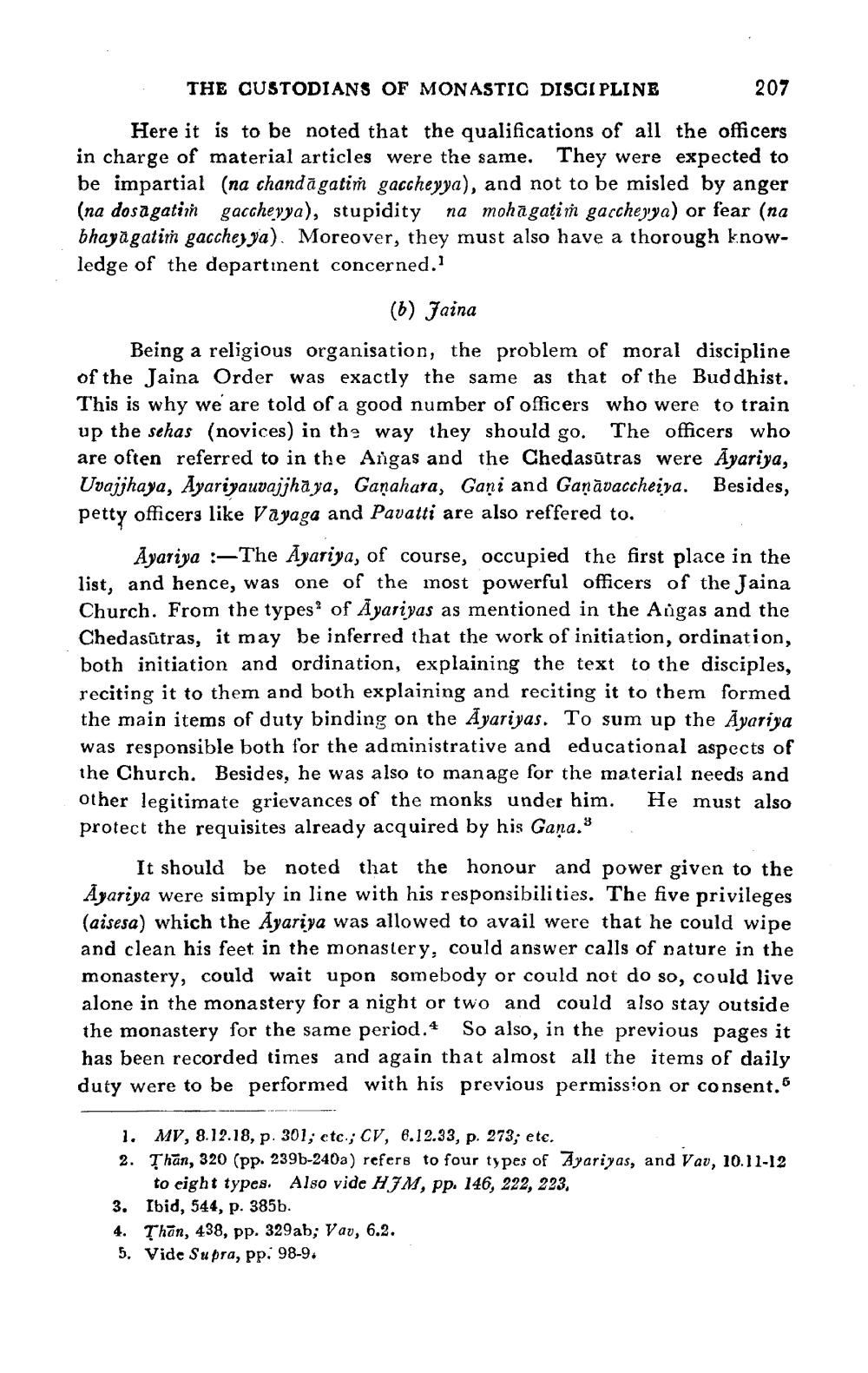________________
THE CUSTODIANS OF MONASTIC DISCIPLINE
Here it is to be noted that the qualifications of all the officers in charge of material articles were the same. They were expected to be impartial (na chandagatim gaccheyya), and not to be misled by anger (na dosagatim gaccheyya), stupidity na mohagatim gaccheyya) or fear (na bhaya gatim gaccheyya). Moreover, they must also have a thorough knowledge of the department concerned.1
207
(b) Jaina
Being a religious organisation, the problem of moral discipline of the Jaina Order was exactly the same as that of the Buddhist. This is why we are told of a good number of officers who were to train up the sehas (novices) in the way they should go. The officers who are often referred to in the Angas and the Chedasūtras were Ayariya, Uvajjhaya, Ayariyauvajjhaya, Gaṇahara, Gani and Ganavaccheiya. Besides, petty officers like Vayaga and Pavatti are also reffered to.
Ayariya -The Ayariya, of course, occupied the first place in the list, and hence, was one of the most powerful officers of the Jaina Church. From the types of Ayariyas as mentioned in the Angas and the Chedasūtras, it may be inferred that the work of initiation, ordination, both initiation and ordination, explaining the text to the disciples, reciting it to them and both explaining and reciting it to them formed the main items of duty binding on the Ayariyas. To sum up the Ayariya was responsible both for the administrative and educational aspects of the Church. Besides, he was also to manage for the material needs and other legitimate grievances of the monks under him. He must also protect the requisites already acquired by his Gana.
3
It should be noted that the honour and power given to the Ayariya were simply in line with his responsibilities. The five privileges (aisesa) which the Ayariya was allowed to avail were that he could wipe and clean his feet in the monastery, could answer calls of nature in the monastery, could wait upon somebody or could not do so, could live alone in the monastery for a night or two and could also stay outside the monastery for the same period. So also, in the previous pages it has been recorded times and again that almost all the items of daily duty were to be performed with his previous permission or consent."
1. MV, 8.12.18, p. 301; etc.; CV, 6.12.33, p. 273; etc.
2. Than, 320 (pp. 239b-240a) refers to four types of Ayariyas, and Vav, 10.11-12 to eight types. Also vide HJM, pp. 146, 222, 223,
3. Ibid, 544, p. 385b.
4. Than, 438, pp. 329ab; Vav, 6.2.
5. Vide Supra, pp. 98-9.




